Did You Know That You Should Also Winterize Your Pool? Here Are the 9 Tasks You'll Need to Do
Here's how you can protect your pool and prevent damage before freezing temperatures arrive
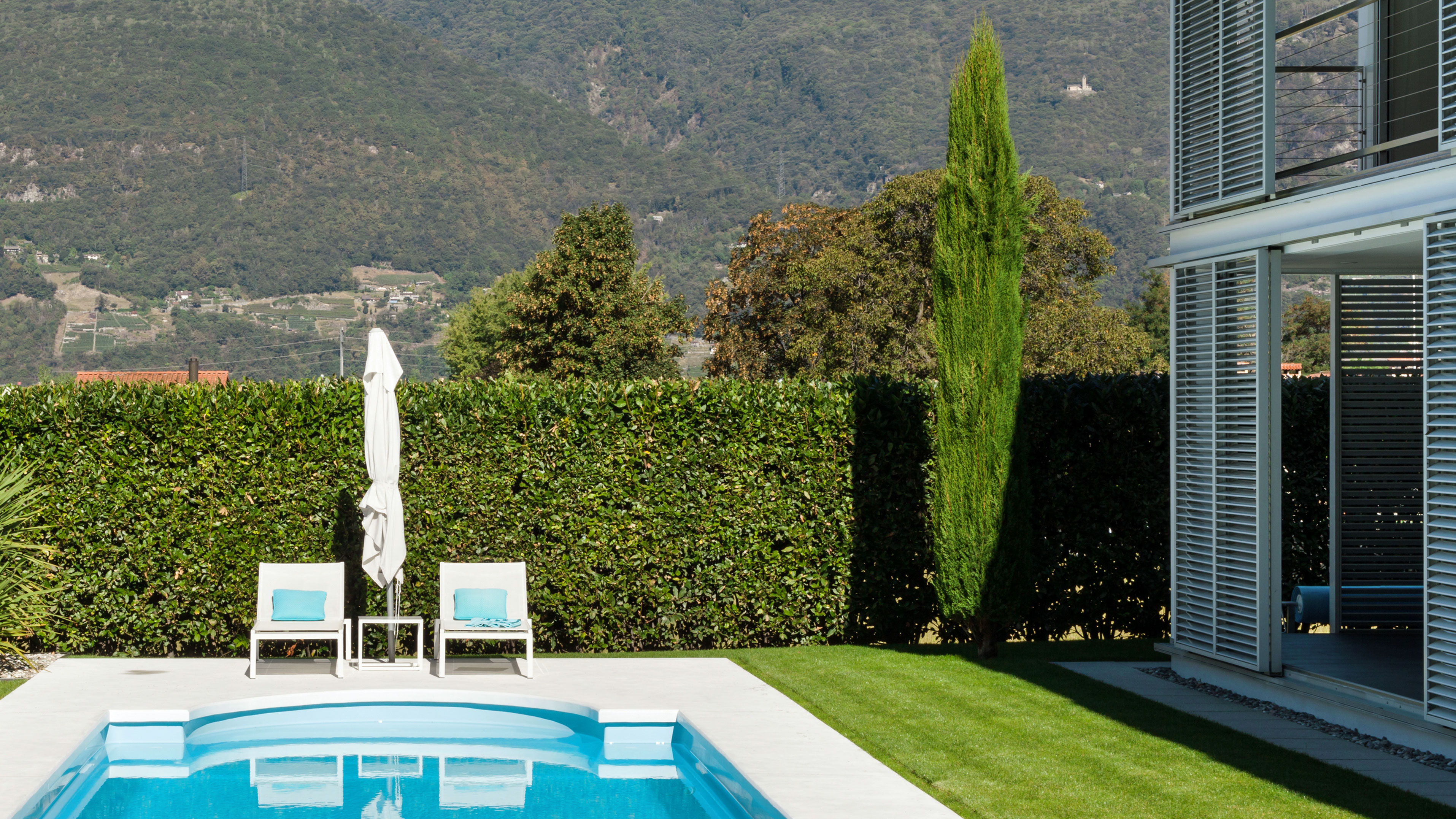
After the fun of summer, winterizing a pool may be on your mind. When and how to carry out this task will obviously vary according to the weather in your region, as well as the type of pool you have.
Small natural pools don't require much (if any) winterizing at all, while larger standard chlorine pools will require a more intricate process. For example, the latter will, at the least, need cleaning and chemical top-ups to prevent algae and bacteria from forming while they are not in use.
These tasks can be done when you winterize your yard (or by a professional). From sweeping leaves off the surface to covering your pool, find out the general guidelines experts suggest for winterizing a pool.
How to winterize a pool
Pool ideas vary vastly, from natural oases to slick, modern designs, both in-ground and above-ground. Not all pools need winterizing, but closing the pool is necessary if you live somewhere with freezing winters and won't be using it for several months.
"Winterization is essential in many parts of the country, but it's most critical in the Midwest, Mid-Atlantic, and Northeast regions, where freezing temperatures are common," says Brad Hull, Founder of Coastal Pools. The expert says proper winterization has two key aspects and that is "firstly, winterizing and dewatering all plumbing and pool equipment. Secondly, ensuring water chemistry is balanced." He continues: "Failing to winterize can lead to costly equipment failures and broken plumbing, with common issues like cracked pipes, pumps, and heat exchangers.
To prevent damage to your pool and potentially expensive repairs, discover where to start with these simple solutions.
1. Clean your pool
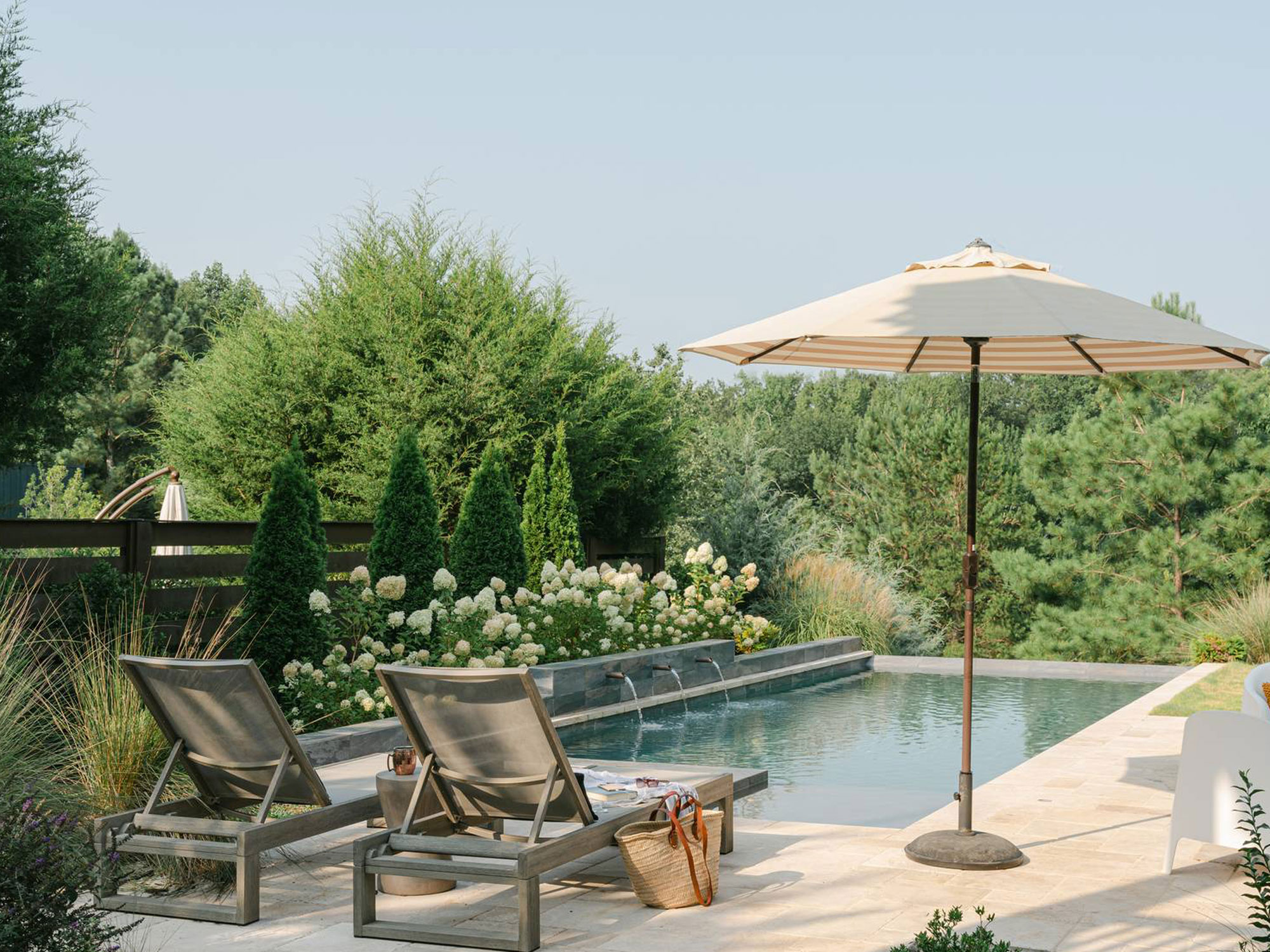
How you clean a pool will differ according to its type. Natural pools tend to be self-cleaning and don't generally require chemicals, while standard pools need far more maintenance.
Both natural pools and standard chlorine pools will benefit from a sweep. Falling leaves, unfortunate bugs, and other detritus should be swept off the surface of both types with a hand skimmer or net. "Small natural pools and plunge pools are generally used year-round," says Karen Larson, co-founder, Soake Pools. "During the winter, keep them covered between uses, so that leaves and fallen debris don't become an issue.
"However, if any leaves drop in while the cover is off, sweep the surface after use and before covering it again. During the winter, it's also recommended to keep the pump running on a natural pool at all times to keep the water moving."
"To start the winterization process for a standard pool, remove all your pool accessories and deep clean it," says Angie Hicks, co-founder of home maintenance site, Angi. "Use a pool brush to clean the insides of the pool and catch any debris with a net. This is an important step to prevent algae buildup."
The type of brush required (like this Mainstays 20" Pool Brush from Walmart) will differ according to the surface materials of your pool's walls and sides, so do check the manufacturer's recommendations if you intend to do the task yourself.
Your pool should also be vacuumed. This keeps the water clean and prevents any debris from clogging up the filter. This may also help to lower the water level. Remember to clean the skimmer baskets and pump baskets, and consider using a stain and scale prevention product.
2. Lower the water level
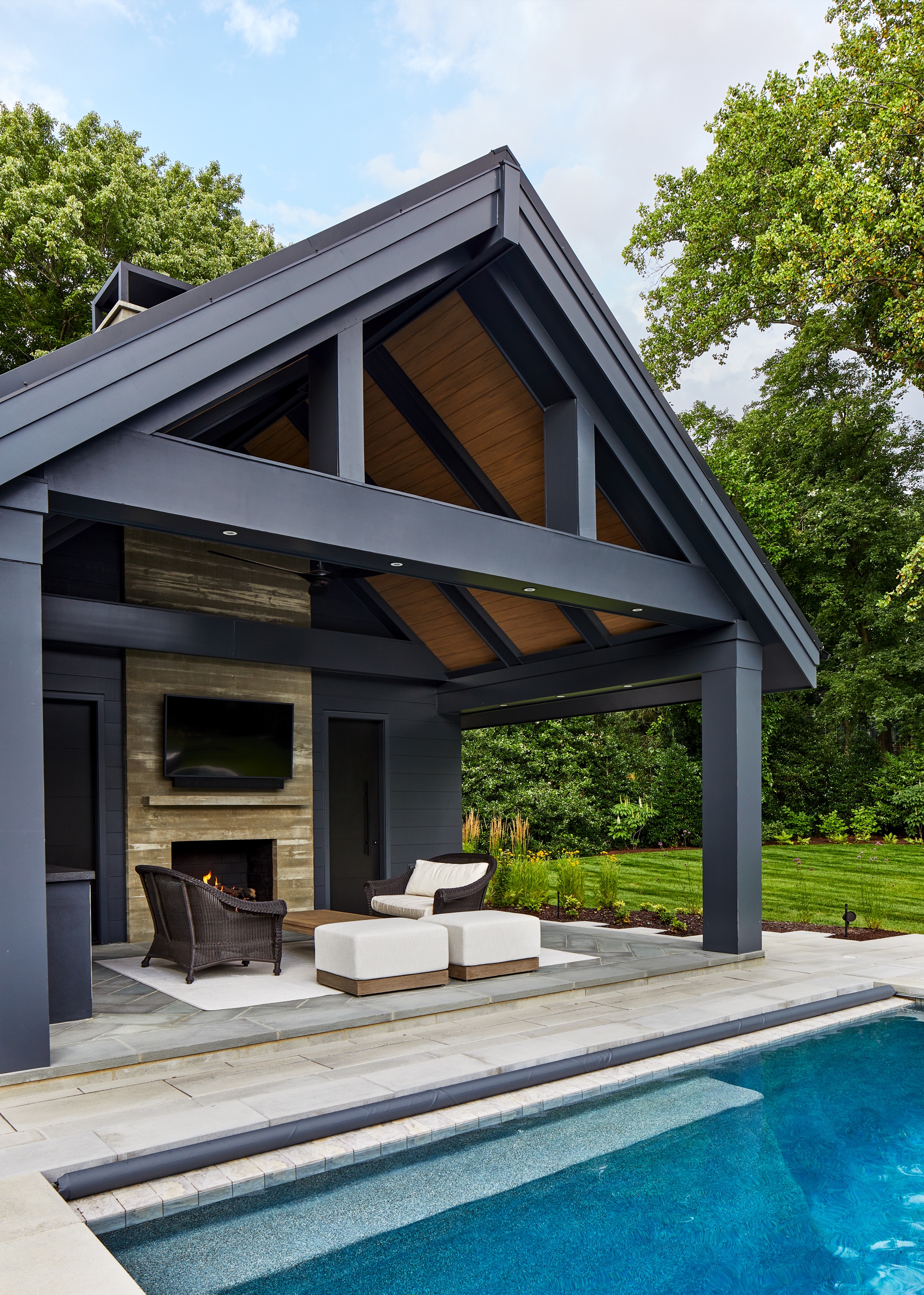
If you opted for an in-ground model, as part of your pool landscape ideas, some of the water will need to be drained off before closing it. (This may apply to some above-ground models too). The water level generally needs to be lowered to below the skimmer, but check what is recommended for your particular pool.
"The correct water level varies by pool type," says Brad Hull. "Draining prevents overflow and helps avoid water intrusion, which can freeze and cause structural damage."
According to the experts at Aqua Pools Online draining to below the skimmer prevents your lines from freezing, which could lead to cracking and leaks. "If water can still get into the lines, it won't be possible to winterize them properly," says an Aqua Pools expert. "Leaving water below the skimmer helps to keep your pool safe. Adding the correct winterizing chemicals will also keep it clean until next spring."
3. Check and balance pH Levels

The pH levels of water in a large or small backyard pool are constantly affected by rainfall, swimming, sun lotion and more. Ideally, the pH of the water should be between 7.2-7.6 and will need balancing before adding chlorine and other chemicals. Balanced pH levels will reduce algae and enable chlorine and other chemicals to work more effectively.
Low alkalinity can also cause corrosion of metal or plastic components in the pool, and staining, so it's important the water is balanced.
If you intend to do this yourself, you can use a testing kit or water test strips to check the pH (and other chemicals) first before adding a pH balancer, like this In The Swim pH Reducer from Amazon.
4. Add algaecide and check phosphate levels
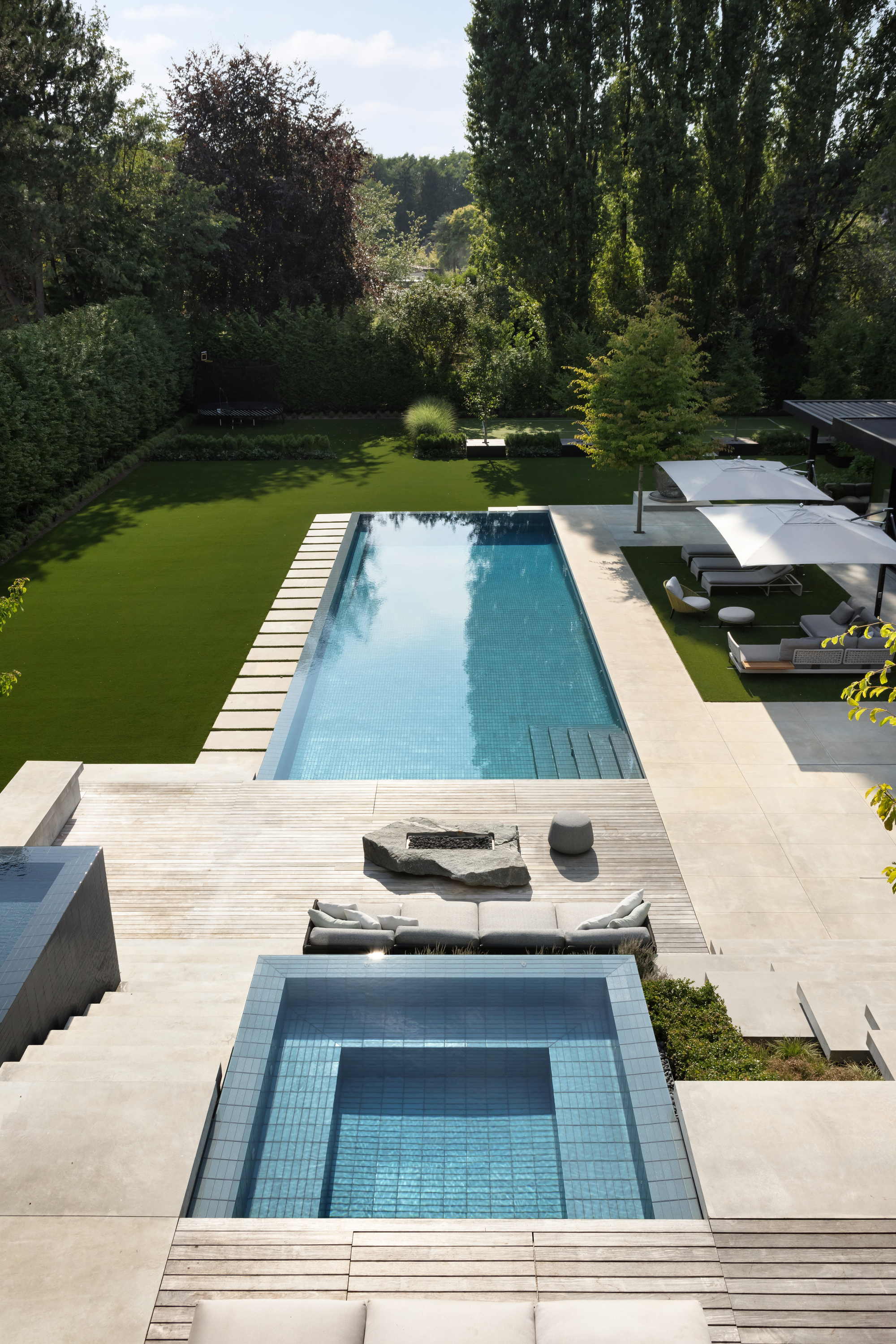
If you've opted for the natural pool trend, this step won't be necessary. However, if you have a standard chlorine pool, the water will need to be tested and treated, as high phosphate levels can cause algae.
"Pool pros recommend that you add a phosphate remover to your pool roughly one week before you winterize it," says Angie. "This will prevent algae, so you won’t have a green pool in the spring."
"The presence of phosphates can make algae more difficult to control," explains Hardy, founder, Mr Pool Man. "Algaecide is for the treatment of algae, while phosphate remover is for prevention." Each time a chemical is applied, it will need time to do its work, before the next one is added. The quantities required will depend on the outcome of any testing, the size of your pool and the amount of water it contains. If in doubt, seek professional advice.
5. Apply chlorine shock or a non-chlorine oxidizer
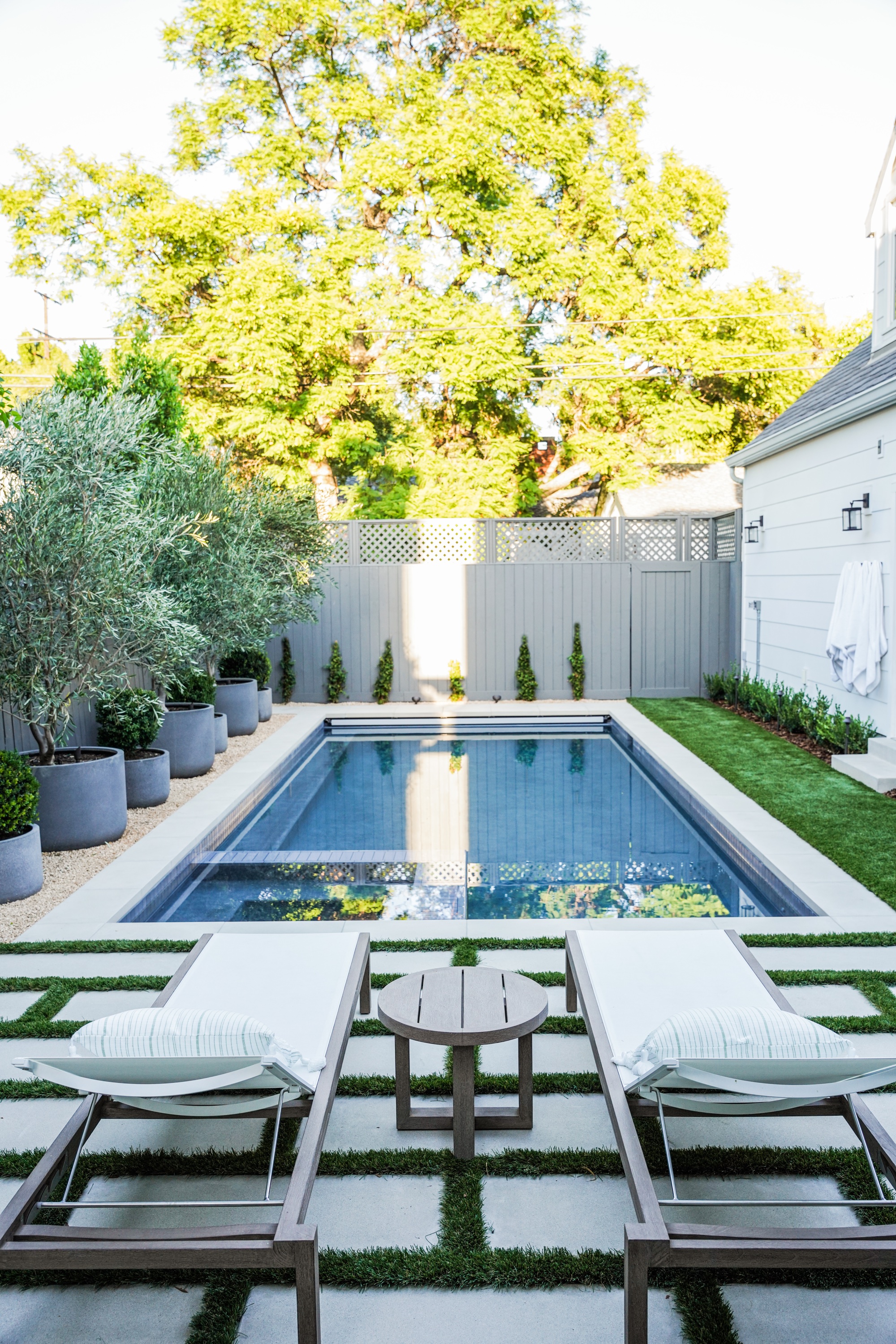
Chlorine obviously helps to keep a pool free of contaminants, however levels drop and it needs topping up regularly. Applying chlorine shock is also an important step at the end of the season.
Raising the level of chlorine will prevent bacteria and algae from forming while the pool is out of use. However, the amounts to apply will depend on whether your pool is chlorinated or salt water chlorinated, its size and other factors. Vinyl pools can also be sensitive to harsh chemicals. Chlorine can burn so wear protective clothing when handling any pool chemicals and avoid inhaling the fumes.
"There isn't a set calculation of how much to use, as it depends on the type of shock you're using," says Tom at Mr Pool Man. "It's best to refer to the packaging for precise instructions. However, we recommend getting your water tested by a pool professional before adding any type of chemicals for your own safety."
6. Clean the filter
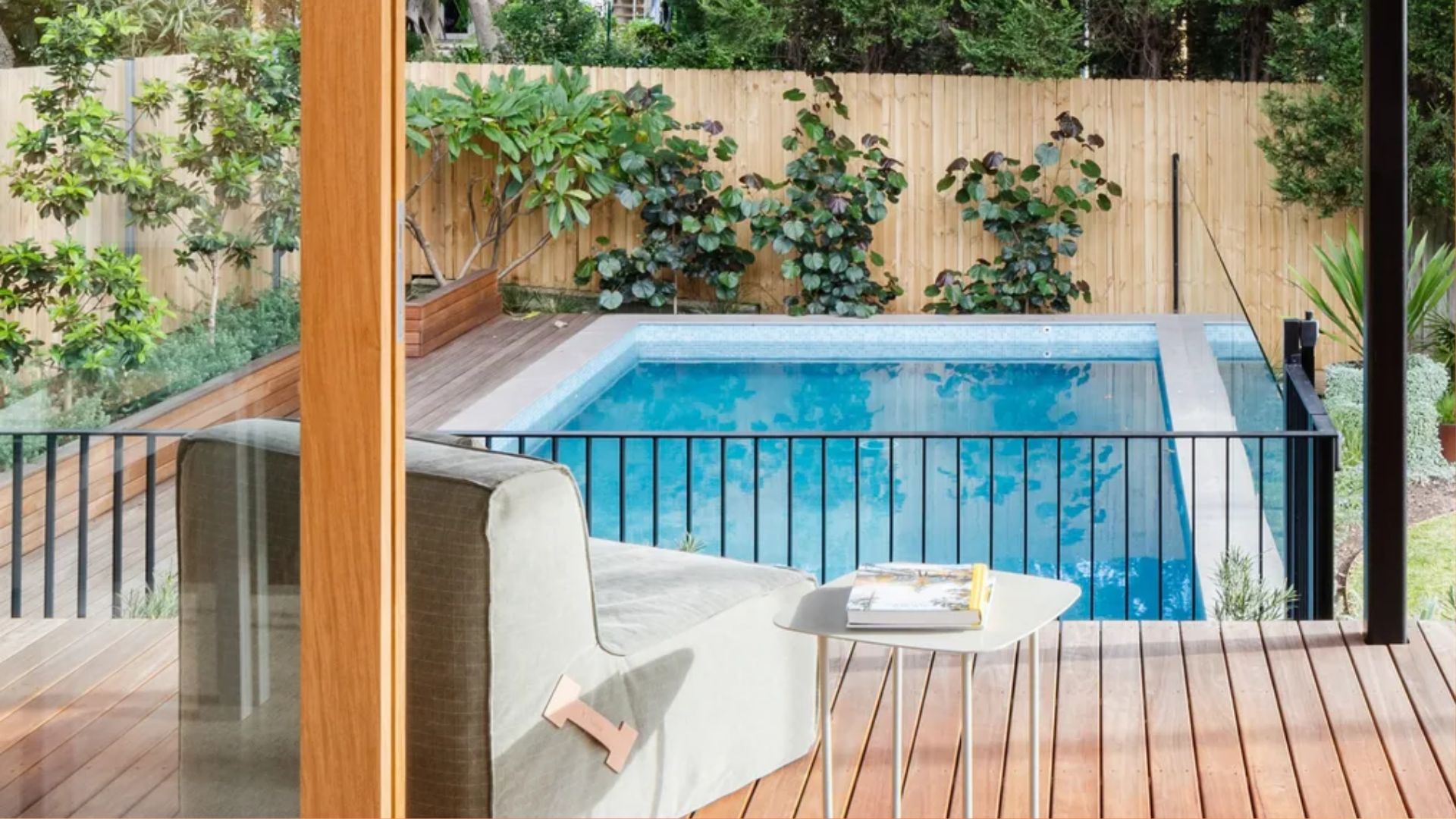
A filter can only work if it's clean and free of debris, so give your pool filter a wash down, or soak it in filter cleaner, and replace the cartridge if required. Sand filters can be backwashed to clean them out.
"Cleaning the filter at the end of the season prevents dirt from becoming compacted and harder to remove after winter," says Brad Hull.
7. Dewater the equipment

Frozen pipes can burst, so it is essential that water is not left in any parts of the pool equipment that could freeze.
"Blow out all lines and dewater the equipment," says Brad. "This step is crucial to prevent damage to plumbing and pool equipment, both above ground and underground.
"The equipment should not run during the off-season if it has been properly winterized. Winterization involves removing water and plugging lines, preventing water flow through the pumps," continues Brad. "Running pumps without water can cause overheating and damage. However, to prevent rust buildup on the pump shafts, it’s a good idea to briefly run the pumps for 5-10 seconds once a month. This short duration is not long enough to cause overheating but helps prevent the pump from seizing."
8. Install an air pillow
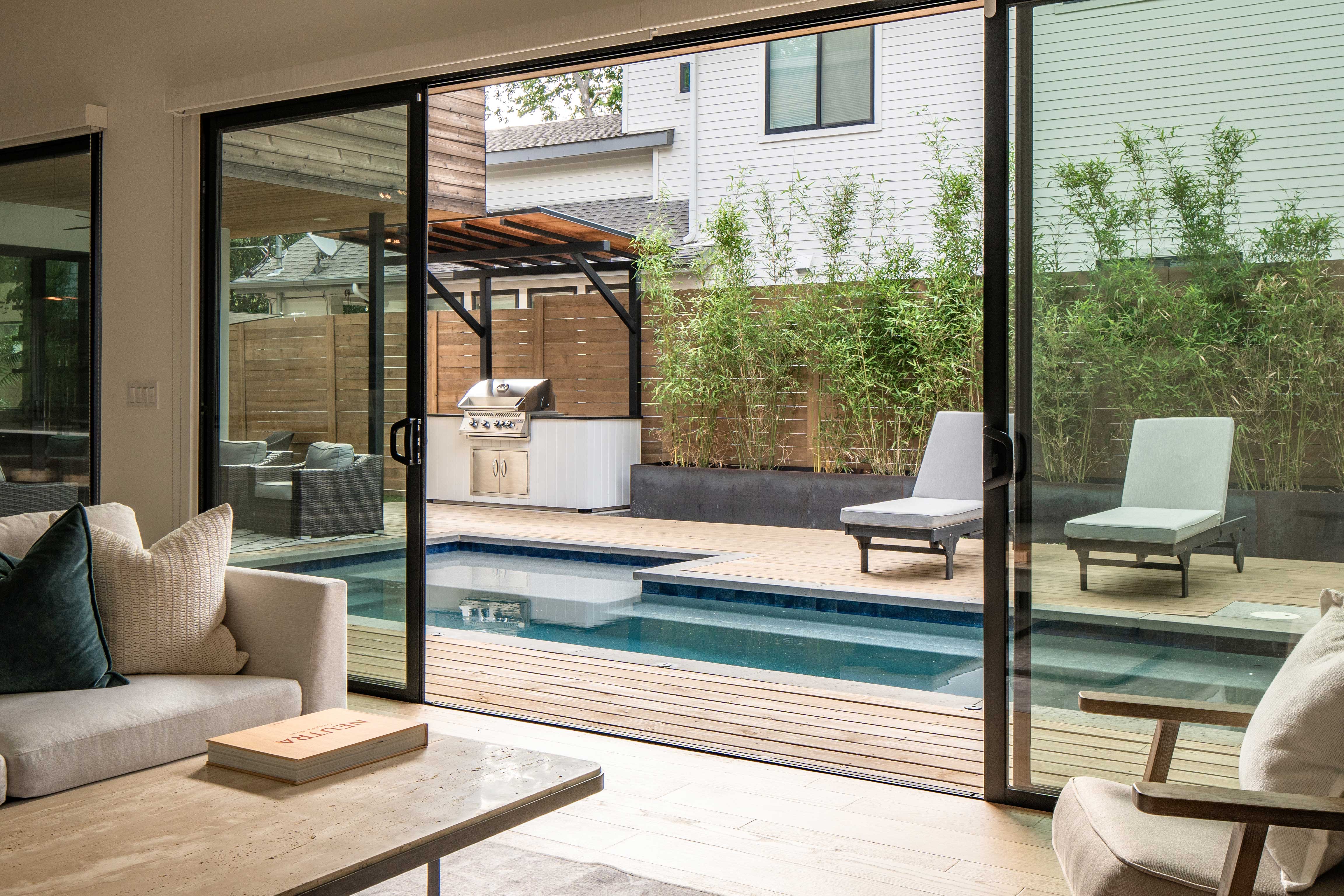
Air pillows are not essential in all regions, however, they can be useful to prevent heavy snow causing damage.
"If you live in an area that receives a lot of snow, installing an air pillow can help prevent damage to your pool’s walls," says Angie Hicks. "Keep in mind that you need to lower the water level before installing an air pillow, so carefully follow the manufacturer’s guidelines during the installation process."
9. Cover the pool
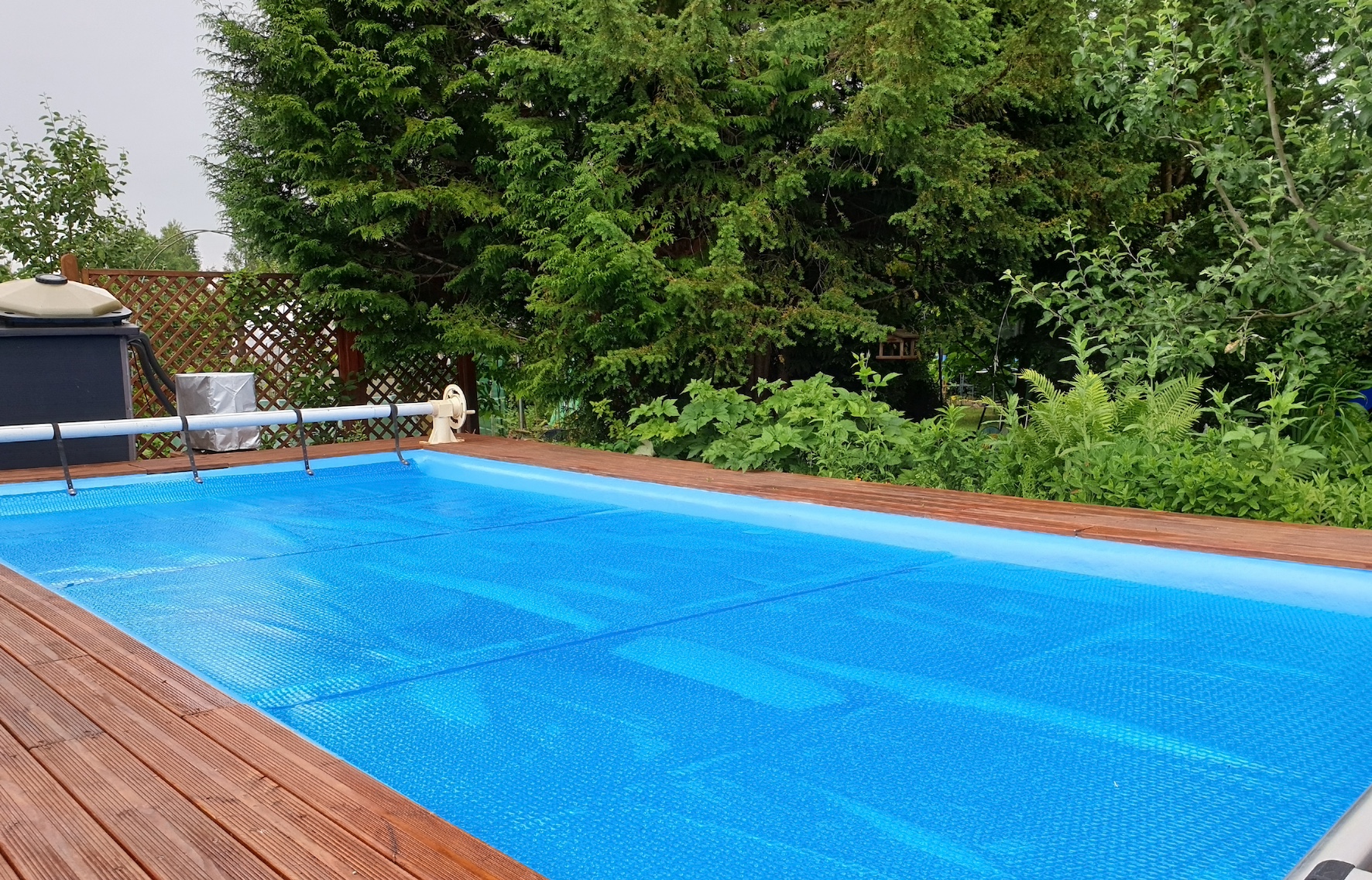
Once you're satisfied that the water chemistry has been balanced, everything has been cleaned, correct chemicals applied, the lines are blown and all the tasks are complete, it's time to pull the pool cover over.
Even though, you won't be using the pool until next year, it's worth periodically checking the cover for any damage, and monitoring the water levels and chemical balance throughout the winter months.
"If you don’t have the time, inclination or ability to winterize your pool yourself, consider bringing in a pro to do the job for you," says Angie Hicks.
Winterizing a pool requires technical maintenance and harsh chemicals, so it's important to get it right. The information offered is general guidelines. It may be necessary to have advice specific to your pool and the weather in your area. Hiring a professional will provide peace of mind and may be more cost effective in the long run. It's time to protect your pool and the plants placed around the pool — during the winter freeze.
FAQs
When should I winterize a pool?
Water expands when it freezes, which could potentially cause damage to a pool. Winterize a pool before the weather cools significantly, if you live somewhere with cold and snowy winters.
"Depending on your location, you may need to winterize your pool in the fall, early winter, or not at all," says Angie Hicks, co-founder, Angi. "When in doubt, winterize your pool when temperatures start to drop below 65 degrees Fahrenheit."
Do I need to clean it first?
Yes, sweep leaves, bugs, and other debris off the surface before covering a natural pool, or applying chemicals to a chlorine pool. Dead leaves and debris can cause algae and bacteria to build up, which will be harder to deal with next spring.
"Every pool has slightly different needs, but most people should use a variety of chemicals while winterizing their pools," says Angie. "After it has been cleaned, adding a stain and scale prevention product is a good place to start.
"Then, check your water and adjust the chemical levels as necessary. You should also add shock and algaecide to prevent the buildup of bacteria and algae. Once your levels are normal, you can add winterizing-specific chemicals to keep your pool clean throughout the winter."
Be The First To Know
The Livingetc newsletters are your inside source for what’s shaping interiors now - and what’s next. Discover trend forecasts, smart style ideas, and curated shopping inspiration that brings design to life. Subscribe today and stay ahead of the curve.
Jacky Parker is a London-based freelance journalist and content creator, specialising in interiors, travel and food. From buying guides and real home case studies to shopping and news pages, she produces a wide range of features for national magazines and SEO content for websites
A long-time contributor to Livingetc, as a member of the team, she regularly reports on the latest trends, speaking to experts and discovering the latest tips. Jacky has also written for other publications such as Homes and Gardens, Ideal Home, Red, Grand Designs, Sunday Times Style and AD, Country Homes and Interiors and ELLE Decoration.
-
 Turns Out the Coolest New Café is Actually In Your Kitchen — Here's How to Steal the Style of TikTok's Latest Trend
Turns Out the Coolest New Café is Actually In Your Kitchen — Here's How to Steal the Style of TikTok's Latest TrendGoodbye, over-priced lattes. Hello, home-brewed coffee with friends. TikTok's 'Home Cafe' trend brings stylish cafe culture into the comfort of your own home
By Devin Toolen Published
-
 5 Bathroom Layouts That Look Dated in 2025 — Plus the Alternatives Designers Use Instead for a More Contemporary Space
5 Bathroom Layouts That Look Dated in 2025 — Plus the Alternatives Designers Use Instead for a More Contemporary SpaceFor a bathroom that feels in line with the times, avoid these layouts and be more intentional with the placement and positioning of your features and fixtures
By Lilith Hudson Published
-
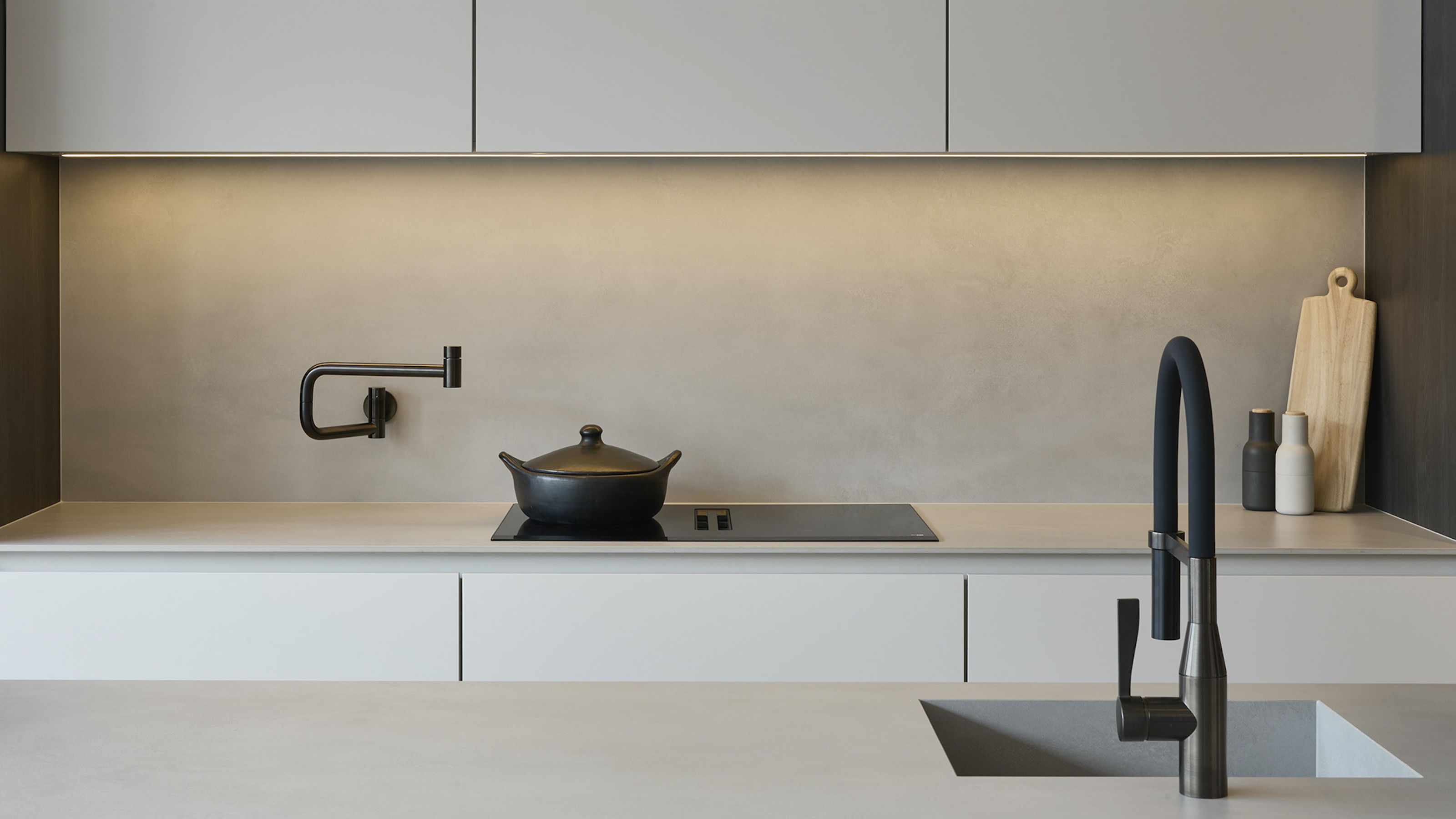 The 10 Different Types of Kitchen Taps — And the Pros and Cons of Each One to Know Before You Pick
The 10 Different Types of Kitchen Taps — And the Pros and Cons of Each One to Know Before You PickFrom sleek pull-outs to vintage bridge taps, explore 10 kitchen tap styles that mix function, flair, and a splash of cool
By Linda Clayton Published
-
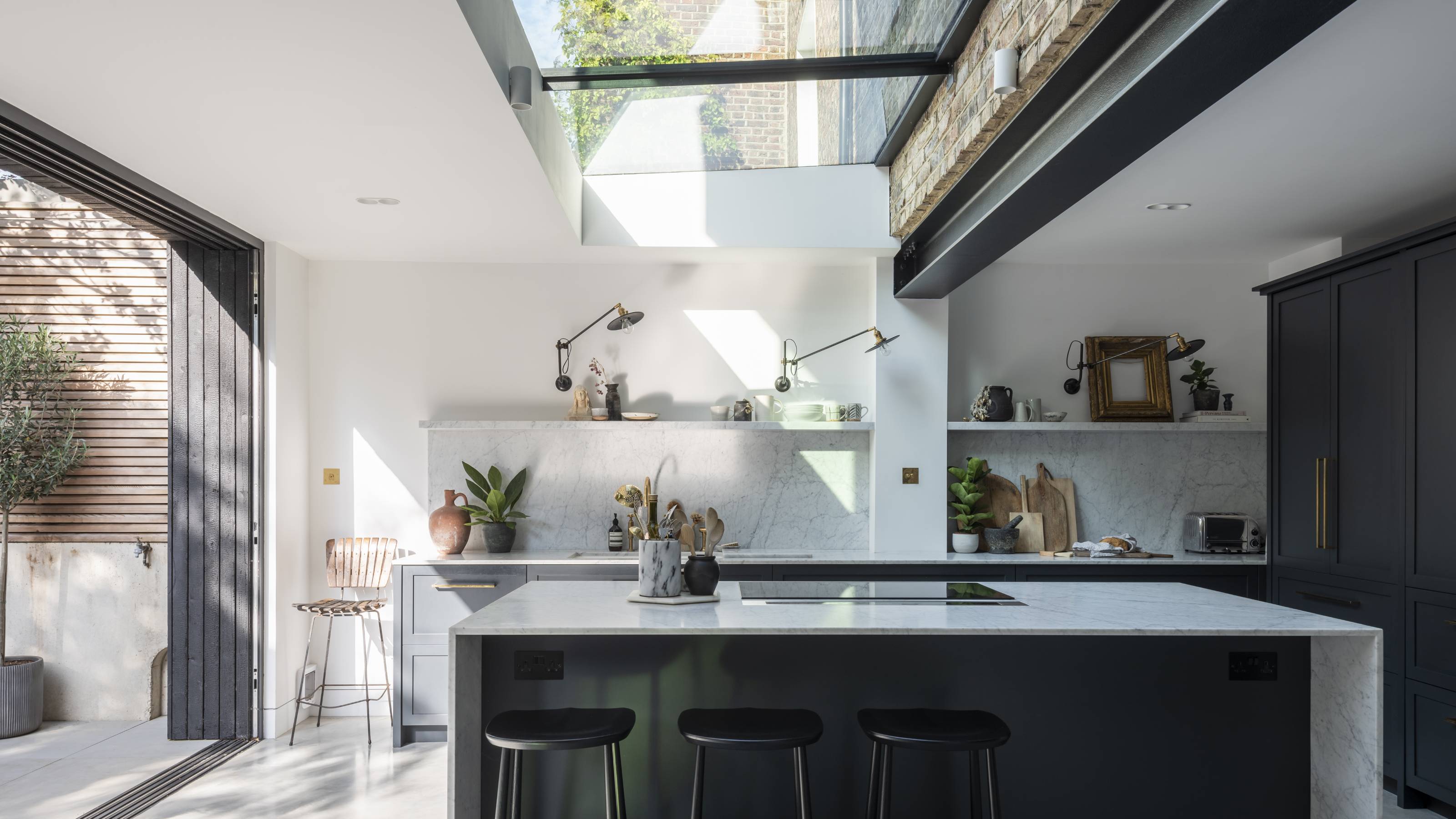 How Much Does an Extension Cost in 2025? Renovation and Design Experts Break Down Your Budget
How Much Does an Extension Cost in 2025? Renovation and Design Experts Break Down Your BudgetExplore how much different types of extensions cost in 2025 to budget for your project accurately
By Amy Reeves Published
-
 9 Bathroom Storage Mistakes You're Probably Making That Make Using This Space Much Harder — And What to Do Instead
9 Bathroom Storage Mistakes You're Probably Making That Make Using This Space Much Harder — And What to Do InsteadDiscover which mistakes are to blame for your overcrowded and cluttered bathroom
By Seraphina Kyprios Published
-
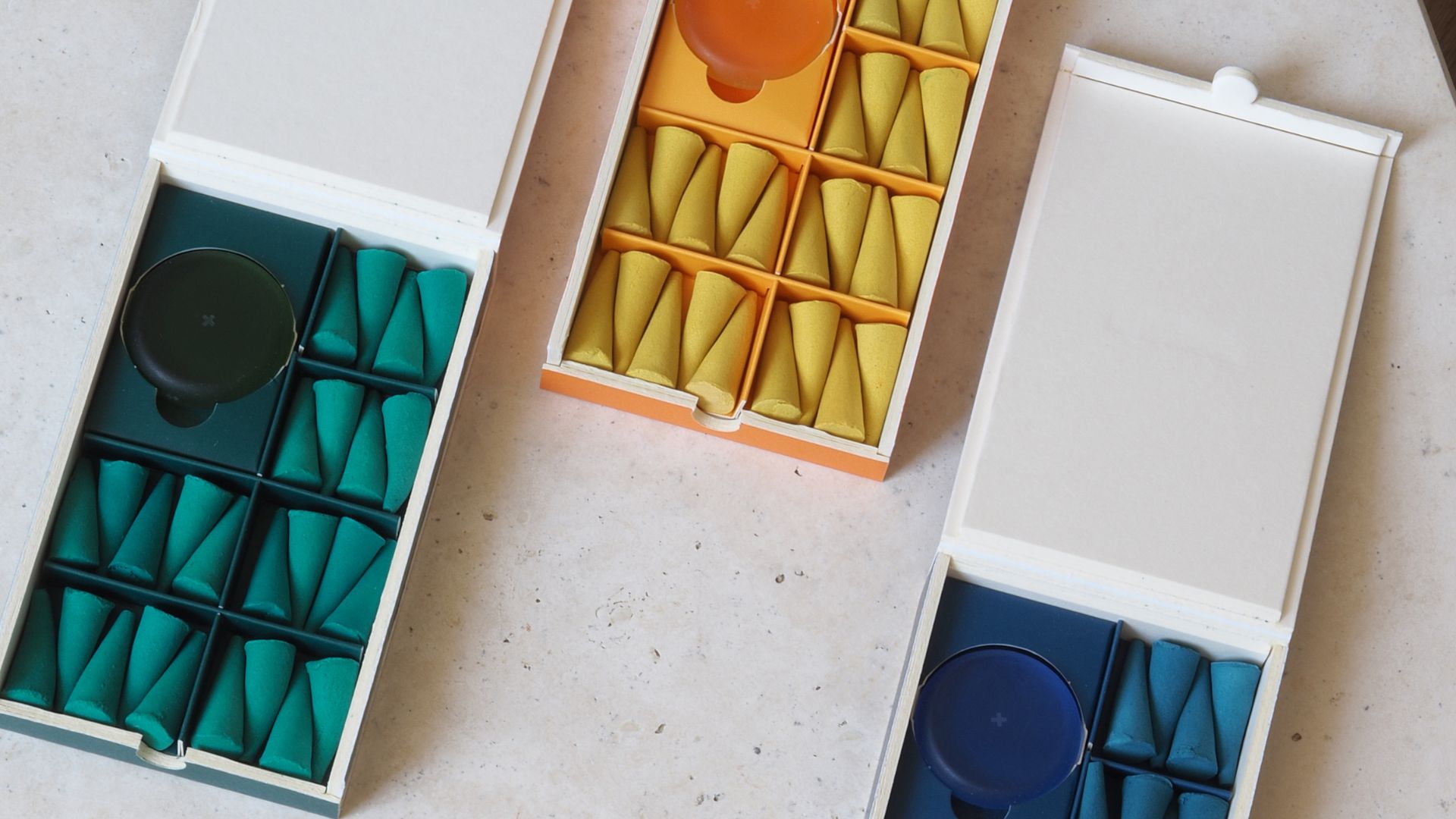 These 'Scenting Droplets' Might Be the Coolest (and Most Stylish) Way to Make Your Home Smell Amazing
These 'Scenting Droplets' Might Be the Coolest (and Most Stylish) Way to Make Your Home Smell AmazingIf you're looking to switch out your incense sticks for something more fun, then you should know about Ripple+'s incense droplets. Let me introduce you.
By Amiya Baratan Published
-
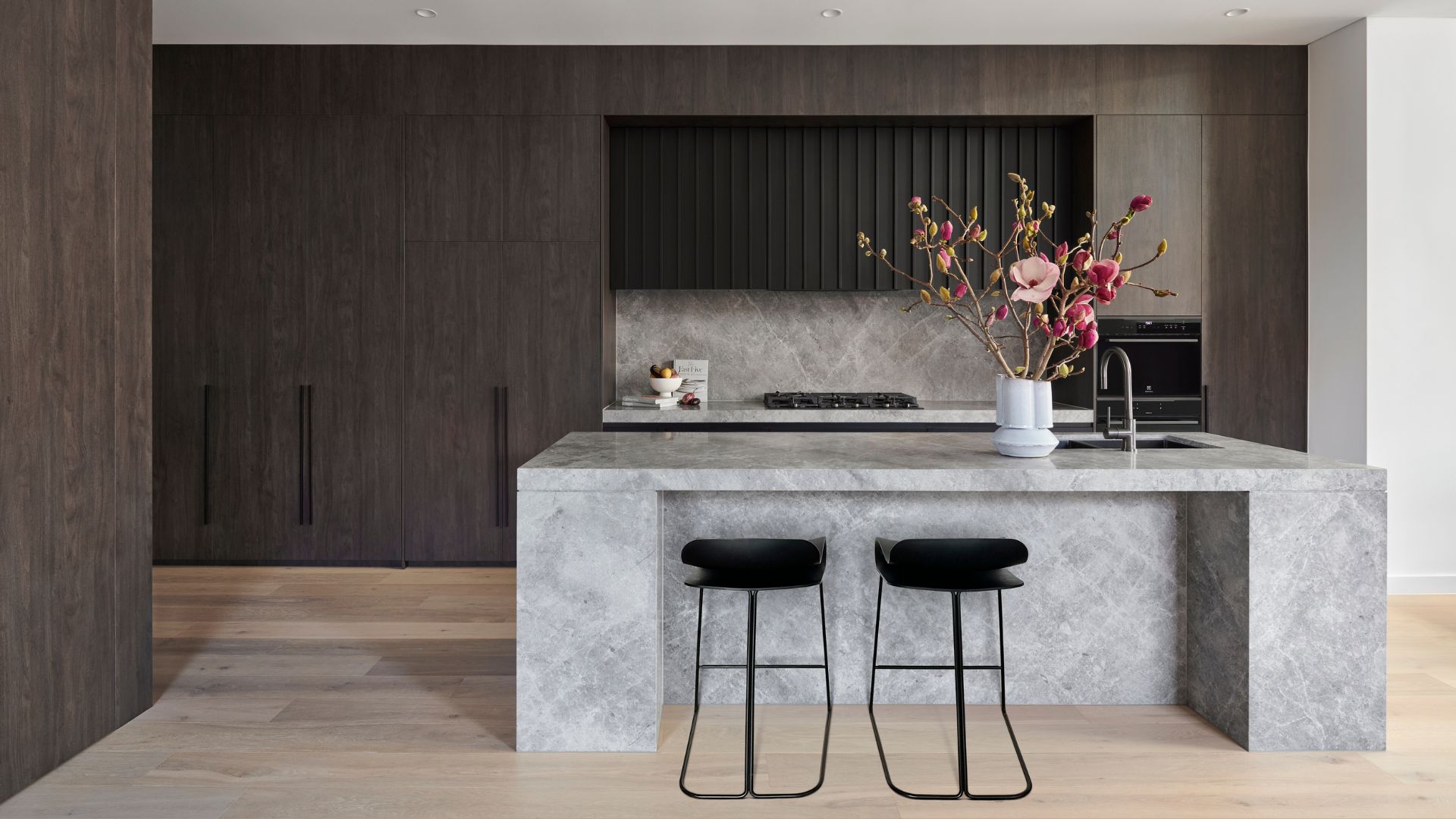 The Japanese Principle of Iki (粋) Is All About 'Refined Elegance' — Here's How to Embrace It in Your Home
The Japanese Principle of Iki (粋) Is All About 'Refined Elegance' — Here's How to Embrace It in Your HomeIf your interior vibe is all about refined elegance and opulent minimalism, you need to know about the Japanese principle of 'Iki'. Here's how to bring it home.
By Amiya Baratan Published
-
 What Can I Choose Instead of Brass Taps? 4 Finishes That Are Emerging in 2025's Kitchens and Bathrooms
What Can I Choose Instead of Brass Taps? 4 Finishes That Are Emerging in 2025's Kitchens and BathroomsIf you want to try something a little different for your kitchen or bathroom finishes, these are the trending styles in taps beyond classic brass
By Seraphina Kyprios Published
-
 Kris Jenner’s 'All-Green' Glass Fridge Is My Organization Inspo of the Week — Here Are 5 Smart Storage Takeaways I'll Be Adopting
Kris Jenner’s 'All-Green' Glass Fridge Is My Organization Inspo of the Week — Here Are 5 Smart Storage Takeaways I'll Be AdoptingIf you're looking for fridgescaping inspiration, you might not think to look to Kris. But her all-green fridge says otherwise. Here are five tips we've learnt.
By Amiya Baratan Published
-
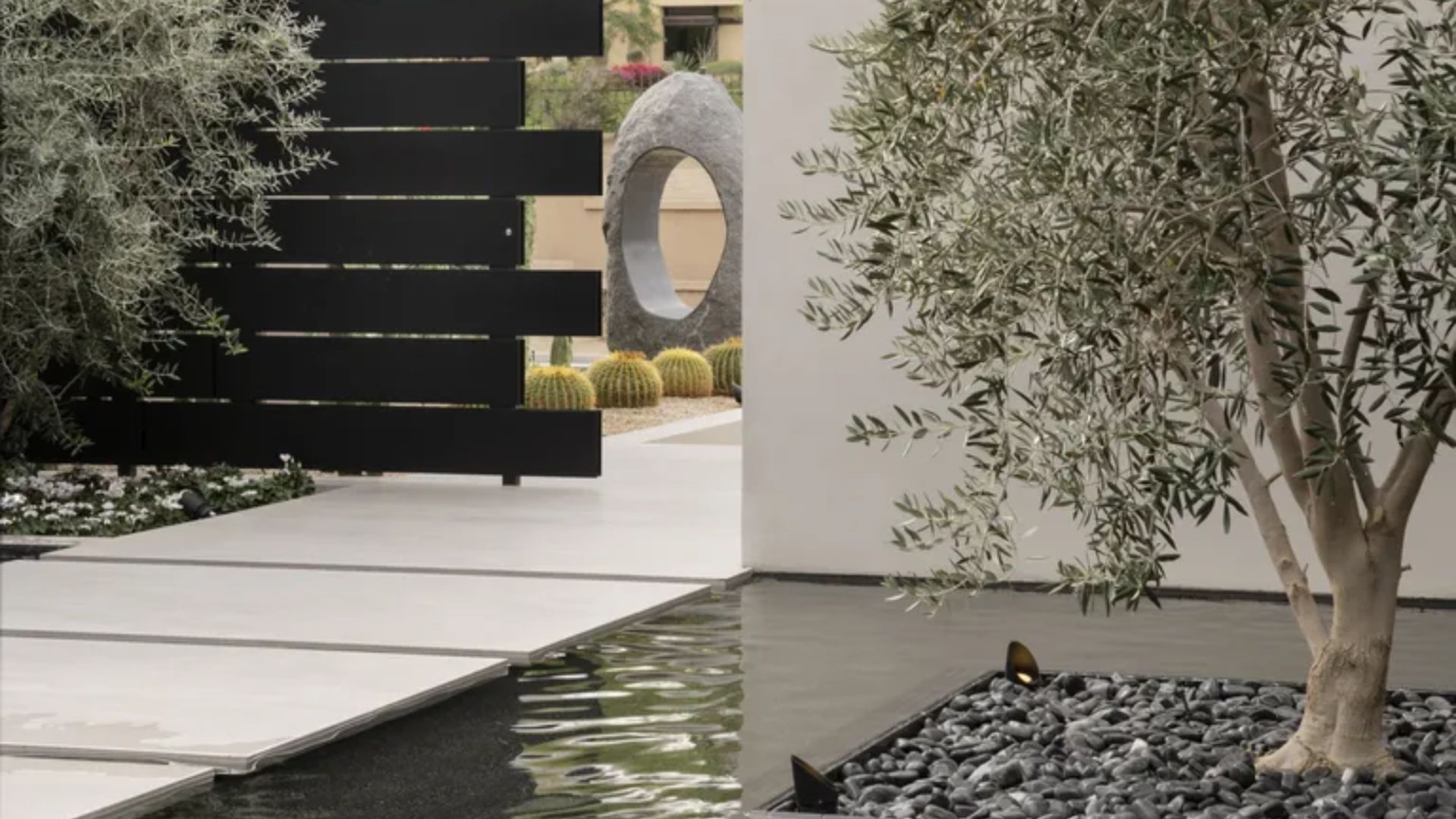 8 Tranquil Water Garden Ideas That Look Beautiful and Train Your Ear Away From Noisy Outdoor Distractions
8 Tranquil Water Garden Ideas That Look Beautiful and Train Your Ear Away From Noisy Outdoor DistractionsIf you enjoy spending time outdoors and are looking for ways to elevate your backyard's ambiance, here are 88 water garden ideas that are sure to inspire.
By Amiya Baratan Published